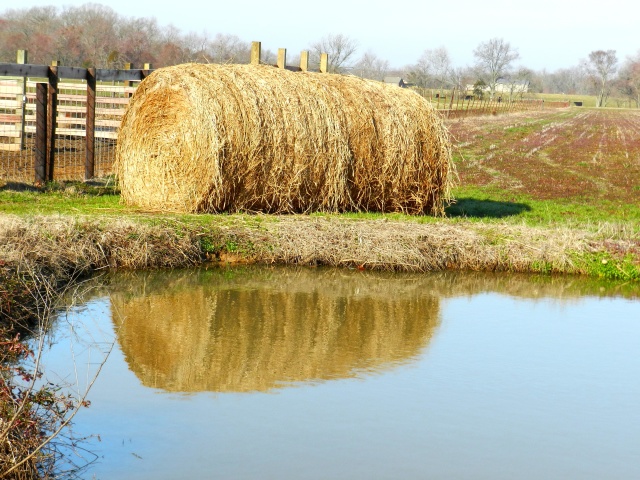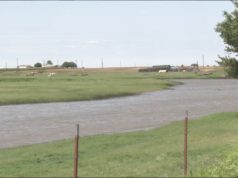Whitney Hansen isn’t pulling any punches. After all, she has a business to run. In addition to her Oklahoma cow-calf operation, she also helps run a 9,500-acre corn, wheat and milo farm in Colorado.
“I’m the book keeper, the housekeeper, the mom, the combine driver, the marketer … I do it all,” Hansen said.
She is in charge of it all, from genetics and breeding to managing staff. Her role is not uncommon: Of the 80,000 farmers and ranchers in Oklahoma, 98 percent operate a family-owned farm, making Oklahoma one of the highest concentrations of family-owned farms in the country.
Still, Hansen is something of an anomaly in a male-dominated field: Only 9,076 women are the principal operators of a farm or ranch in Oklahoma, compared to just over 71,000 men.
“Women have a place in agriculture — in all aspects of agriculture,” Hansen said.
One of Hansen’s greatest concerns is ensuring her family’s sixth generation is prepared and able to continue the farm, and that the option to farm is available to her sons should they choose it for themselves.
State Question 777, also known as “Right to Farm,” is on the ballot for November 2016. The constitutional amendment would state: “The Legislature shall pass no law which abridges the right of citizens and lawful residents of Oklahoma to employ agricultural technology and livestock production and ranching practices without a compelling state interest.”
Agriculture is the second-largest industry in Oklahoma behind energy. It boasts a $36 billion impact to the state’s economy, but only 2 percent of the state’s population is directly involved in food production. Agricultural regulations poses potential help and harm to that vital yet small slice of the population.
An industry that needs protection
From Environmental Protection Agency (EPA) regulations to succession planning and debates between consumers and growers about the “right” way to farm, farmers and ranchers are facing plenty of new challenges. The Right to Farm bill would “protect Oklahoma’s family farmers and ranchers from unreasonable government interference and attacks by out-of-state special interests,” according to oklahomarighttofarm.com.
“The Right to Farm would change the state constitution,” said Blayne Arthur, deputy commissioner for the Oklahoma State Department of Agriculture. “Currently, we have the right to hunt and fish, to rodeo, and so this would include the right to farm. Basically, it ensures that for the next however-many decades, farmers and ranchers will have access to technology and different tools to be able to grow the food and fiber we need as the population grows.”
If SQ 777 passes, Oklahoma will join a growing list of states that protect the right to farm, including Missouri and North Dakota. Around the country, Right to Farm has been pushed largely as a way to prevent organizations like the Human Society from pushing for broader animal rights laws or pollution regulations.
‘Setting a path for the future generations’
Val Wagner is a mother, farmer, and rancher in North Dakota, operating 3,000 acres of farmland to produce corn, soybeans, wheat, alfalfa and grass hay. For her, Right to Farm was not about the immediate state of agriculture, but the future.
“The Right to Farm law didn’t make farming above the law, it just protected us and future generations from some of the misguided attempts at creating anti-farm legislation we saw happening across the country,” Wagner said. “To tell you the truth, our passion for the Right to Farm passage had little to do with our immediate operation. It was more about setting a path for the future generations to come. As people become more and more removed from agriculture, our voice becomes harder to hear. With passing the Right to Farm constitutional amendment, we can cut off some of those attempts to make agriculture and agricultural technologies more difficult for farmers and ranchers.”
One of those technologies is irrigation.
Increasing regulations for water
Under the Obama Administration, the Waters of the United States rule, or WOTUS, has garnered concern from politicians and agricultural stakeholders. The new rule, passed in June 2015, imposes regulations that affect farming and ranching irrigation practices.
“Regulation around irrigation makes a big difference in how farmers can operate,” Arthur said. “There continues to be increased regulation on the federal level, typically from the EPA. It gives government oversight into bodies of water that, historically, they did not have regulation over, and creates extra things farmers and ranchers have to adhere to for an additional cost but doesn’t increase their earnings.”
WOTUS includes bodies of water like tributaries and intermittent streams in the new EPA clean water rule.
An EPA news release from May framed the rule this way:
The rule ensures that waters protected under the Clean Water Act are more precisely defined and predictably determined, making permitting less costly, easier, and faster for businesses and industry. The rule is grounded in law and the latest science, and is shaped by public input. The rule does not create any new permitting requirements for agriculture and maintains all previous exemptions and exclusions.
In the release, EPA administrator Gina McCarthy said:
The water in the rivers and lakes in our communities that flow to our drinking water to be clean, the streams and wetlands that feed them need to be clean too. Protecting our water sources is a critical component of adapting to climate change impacts like drought, sea level rise, stronger storms, and warmer temperatures — which is why EPA and the Army have finalized the Clean Water Rule to protect these important waters, so we can strengthen our economy and provide certainty to American businesses.
Thirteen states have sued the EPA over WOTUS, and the U.S. Sixth Circuit Court of Appeals issued a temporary nationwide stay preventing implementation of the WOTUS rule Friday.
“Farmers don’t need to be taxed in order to protect the resources that impact our bottom line. With water restrictions, it’s a viable concept that we’ll all be dry-land farmers hoping for the next rain, not irrigated farmers making a living,” Hansen said.
Crossing paths could confuse the matter
While Right to Farm and the WOTUS rule come from different regulatory realms (state and federal, respectively), there is some concern that their paths will cross and create more confusion for farmers and regulators.
“If Oklahoma does pass a Right to Farm amendment, it may complicate the job of the state agencies who have been delegated authority by EPA to enforce federal rules in Oklahoma,” said OSU agriculture professor Shannon Ferrell. “That has been one of the potential unintended consequences contemplated by a number of state agencies.
“Passage of the ‘Right to Farm’ amendment in Oklahoma wouldn’t really provide any protection against the implementation of the new WOTUS rule. (…) The very short version is that WOTUS is a federal regulation enacted through authority granted to EPA by the Clean Water Act, and the Supremacy Clause of the U.S. Constitution says, all other things being equal, the federal law would trump any state law conflicting with it. Now, that’s the short answer — there are lots of wrinkles to it.”
However those wrinkles are ironed out, Hansen said she just wants to farm.
“I hope farming is still here for my sons to do,” Hansen said. “It’s what we do, and have always done — feed the world.”






















